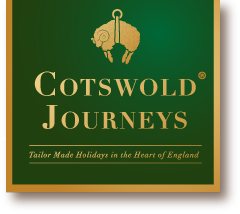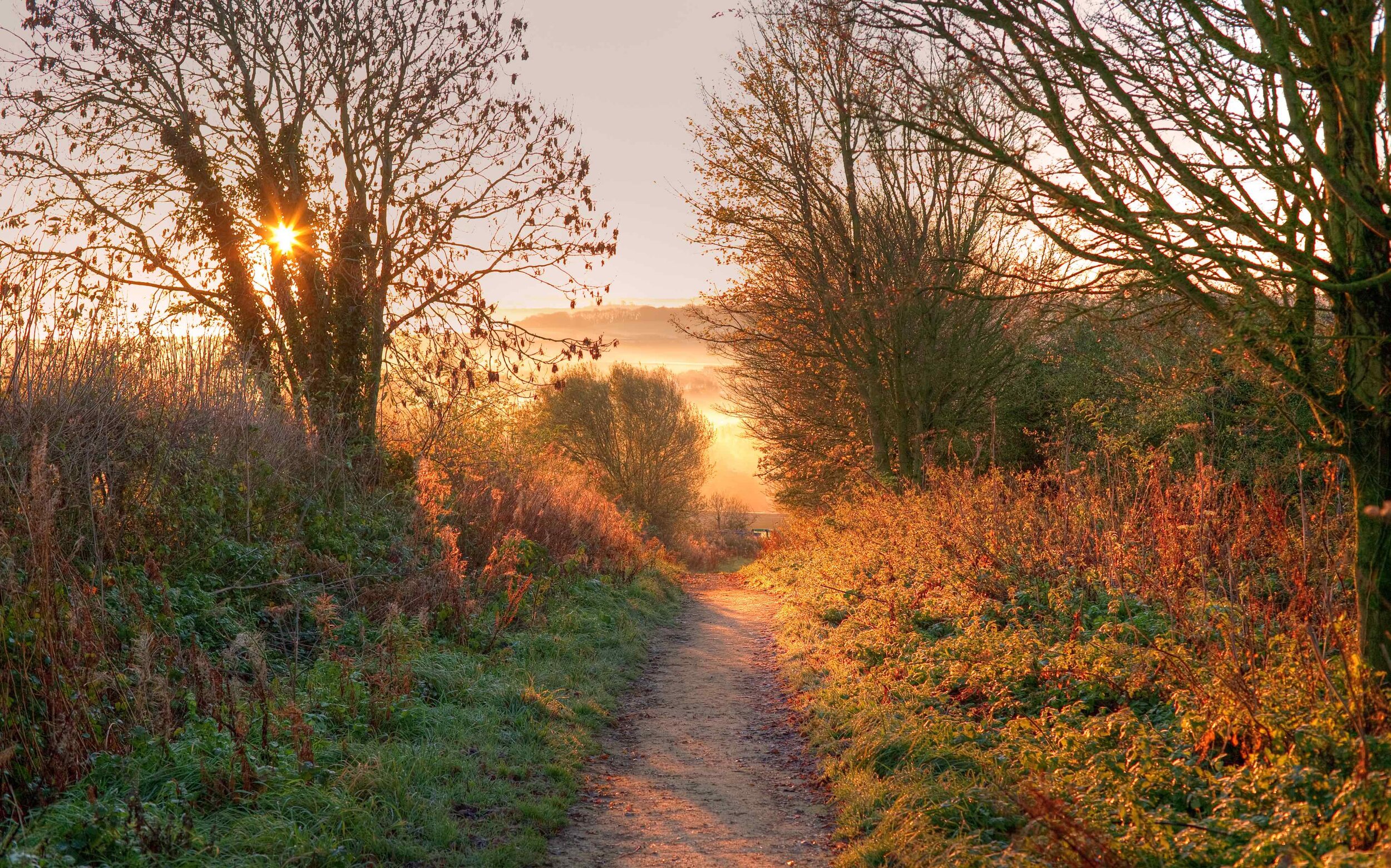ChippingCampden is the finest of all Cotswold villages. This is incontrovertible. The long, gently curving parabola that is the main street is flanked on both sides by unbroken terraces of handsome buildings of every style from the 14th to the 17th centuries, each abutting its neighbor, each slightly different from the next. Most, constructed from golden northern Cotswold limestone, glow with the patina of the ages. These are buildings that have been exploited and loved in equal measure, and it shows. A half day here, or more, will pass easily and quickly. You can just walk around and immerse yourself in Campden’s beauty. Or you can do that and visit a few of the highlights. But you need to see it as a whole and understand its continuity, in order to fully comprehend what you see before you. There has been a settlement here at least since the 7th century. The name ‘Campden’ is derived from the Saxon ‘campa’ and ‘denu’, meaning a valley with cultivated fields ringed by unfenced hill pastures’, a description that could apply to almost every Cotswold village. The word ‘Chipping’ meaning ‘market’ (deriving from ceapen or cēping an Old English word meaning ‘market’, though the meaning may come from the Medieval English word chepynge with a more specific meaning of ‘long market square’) was added later, perhaps when in 1185 the Lord of the Manor, Hugh de Gondeville, was granted a market charter by King Henry II. The Domesday Book recorded a population of about 300.
It was when the market charter was granted that the town as we know it took shape and laid out to respond to its new status. The main street is followed by level ground by the River Cam, in the shallow curve that gives the town its particular grace. Regular plots of land called burgages [a medieval land term used in England and Scotland for a town rental property owned by a king or lord. The property (“burgage tenement”) consisted of a house on a long and narrow plot of land, with the narrow end facing the street] which was to be occupied for a fee by craftsmen, traders, and others. In Campden, these plots lie behind the houses facing the main street and many, as gardens, retain their original form and dimensions.
Campden became a market town in time to make the most of the wool industry that in the 14th and 15th centuries was the main source of Cotswold prosperity. In fact, it became the preeminent wool-trading town in the area, well known throughout Europe (it is mentioned in Florentine documents of the period). Its location on the wool route over the Cotswolds from the Welsh Marches helped. William Grevel, the son of a local man, became one of England’s most successful wool merchants. In about 1380 he built a new house in the High Street (Grevel House) that still stands today, opposite the junction with Church Road. The Woolstaplers Hall on the other side of the High Street was built in the 14th century by Robert Calf and illustrates how Campden had become an important collecting point for fleece, later sold to Flemish and Italian clothiers.
A Time Of Decline And Revival
Agriculture was in decline nationally during the 18th and 19th centuries and Campden suffered accordingly. Wool staples could not be sold abroad and there was insufficient water in the valley to support a wool cloth industry. A silk mill was established in 1790, just off Sheep Street, but this was given up by 1842. In 1836, Campden was described as a “dull, clean, disused market town”. The railway came by in 1840 and there was an out-of-town station but the town declined and, 50 years on, the population was depleted and no less than one in ten cottages stood empty. Providentially, however, Campden was ideal for the relocation from London of Ashbee’s Guild of Handicraft in 1902. This influx revitalized the town’s craftsmanship and community as well as commercial life. The Guild duly rescued, restored in character, and gave new life to many neglected old properties and this began many decades of extraordinary care and conservation of Campden’s built heritage.
20th Century Campden
It was the town’s outstanding architectural heritage, beautiful surroundings, and living tradition of craftsmanship that brought the renowned etcher and architect FL Griggs to settle in Campden in 1904. Over 25 years he devoted all his resources and energies to protecting the heritage and charm of Campden. He stood out against unsuitable development, had many houses restored, saved Dover’s Hill, and had it handed over to the National Trust (NT). Then in 1929, he formed the Campden Trust to continue the conservation effort – as it did very effectively for over 40 years until most of the town was designated a Conservation Area (1970) and protective planning laws were enacted. The Trust did restore many neglected town properties over the years and raised money to acquire The Coneygree and the 17th century Market Hall – both for transfer to the NT.
Since the 70s there has been much added development and infilling in the old part of the town but mainly well-proportioned and in natural stone. Developments on the outskirts have also been managed, in the main, sympathetically. Anyway, none of Campden’s precious open spaces or buildings and street scenes of importance have been lost. It is no wonder then that Campden is such a uniquely attractive historic gem of a town. Since it was laid out so handsomely with its long high street in the 12th Century it has been fortunate. Its growth as a settlement, aided by wool wealth, durable stone, and fine craftsmanship has been untouched by war, industrialization, or arterial traffic. Thanks to this and exceptional care of the special character and built heritage of the town during the last century it has survived splendidly. It is rich in listed (protected) buildings with over 270 in the town, including no less than 170 in the extended High Street alone. In addition to its charm, Campden is still a thriving small market town with a wide range of high-quality places to stay, restaurants, attractions, shops and other amenities.


0 Comments